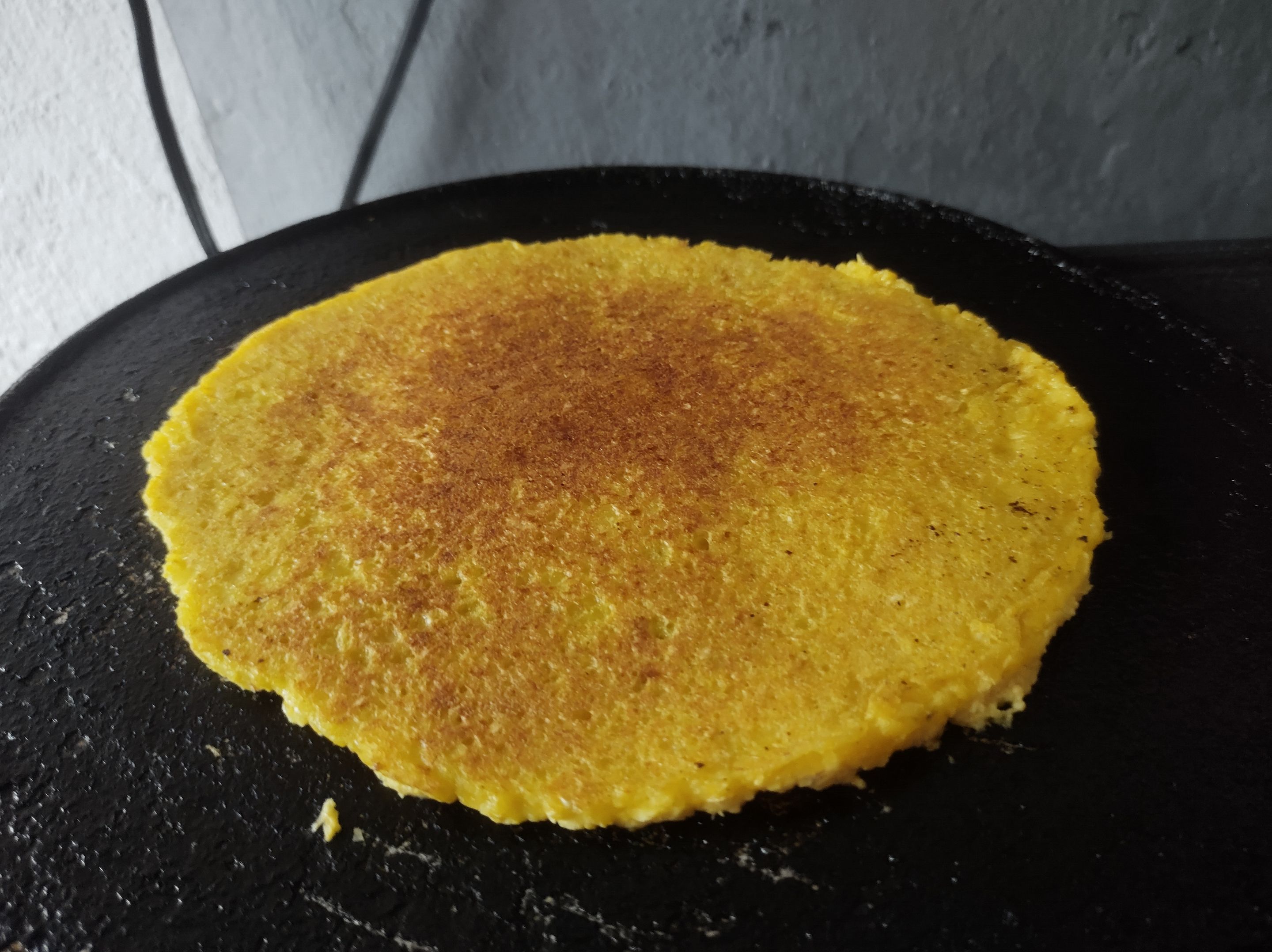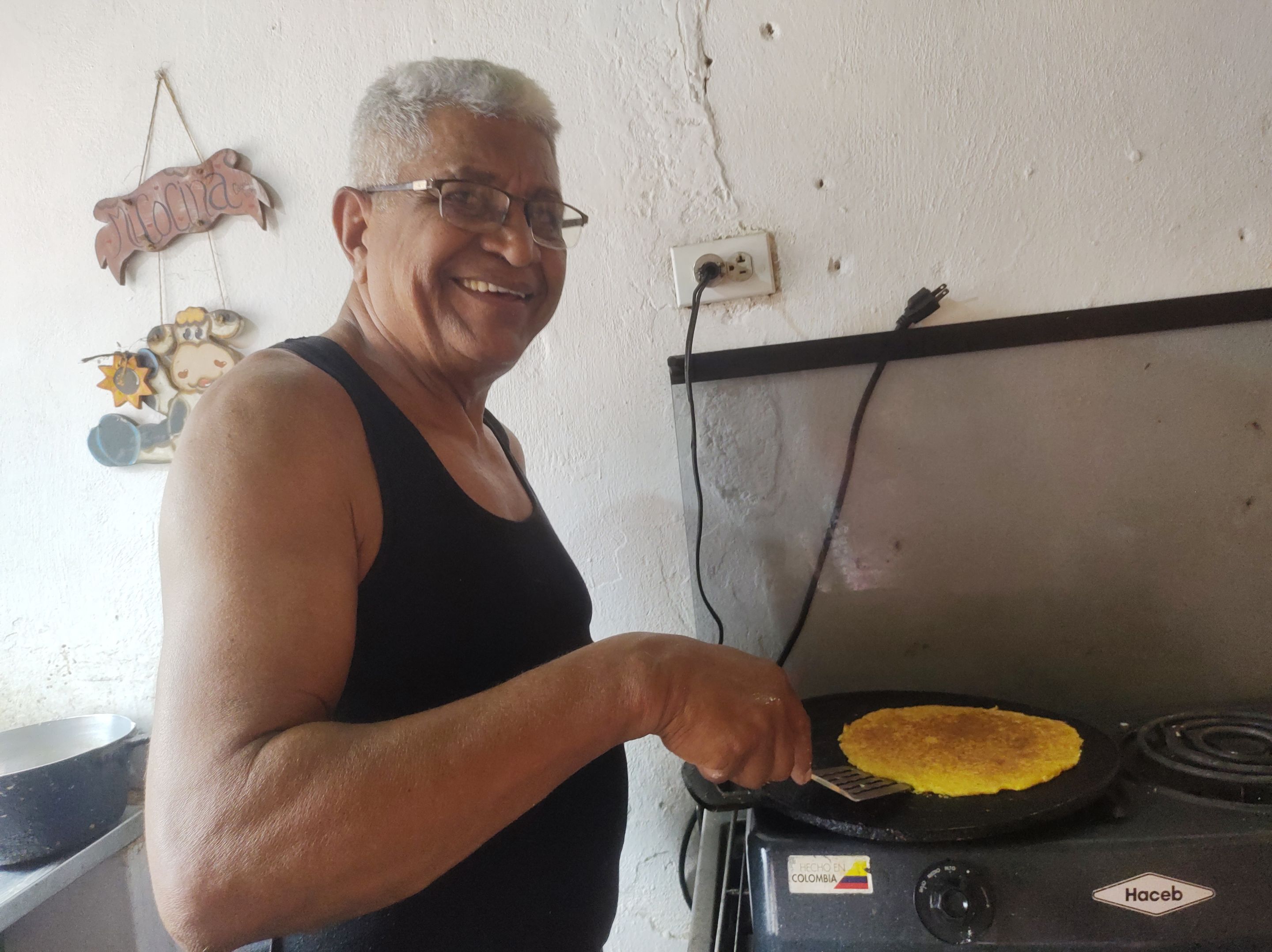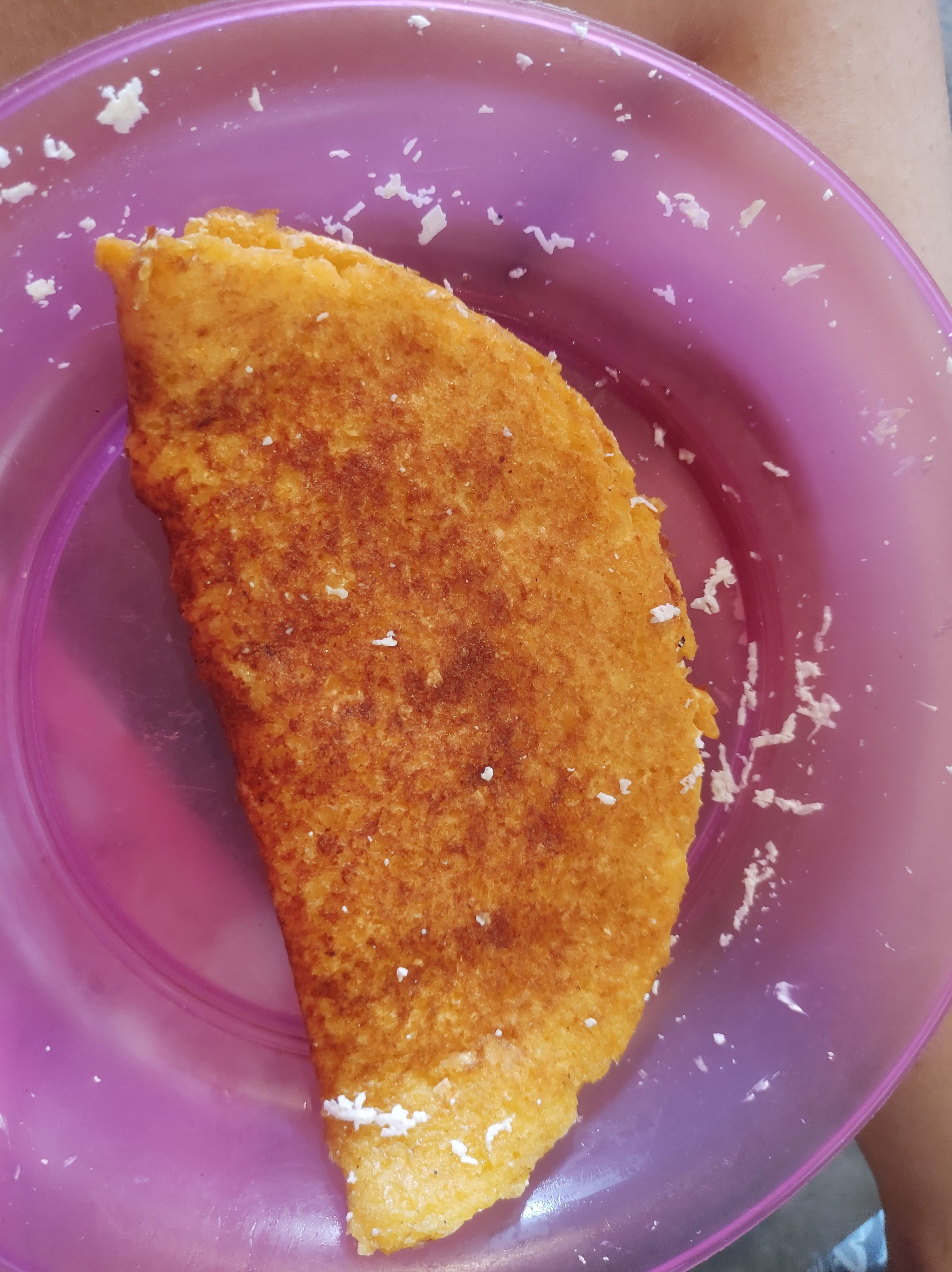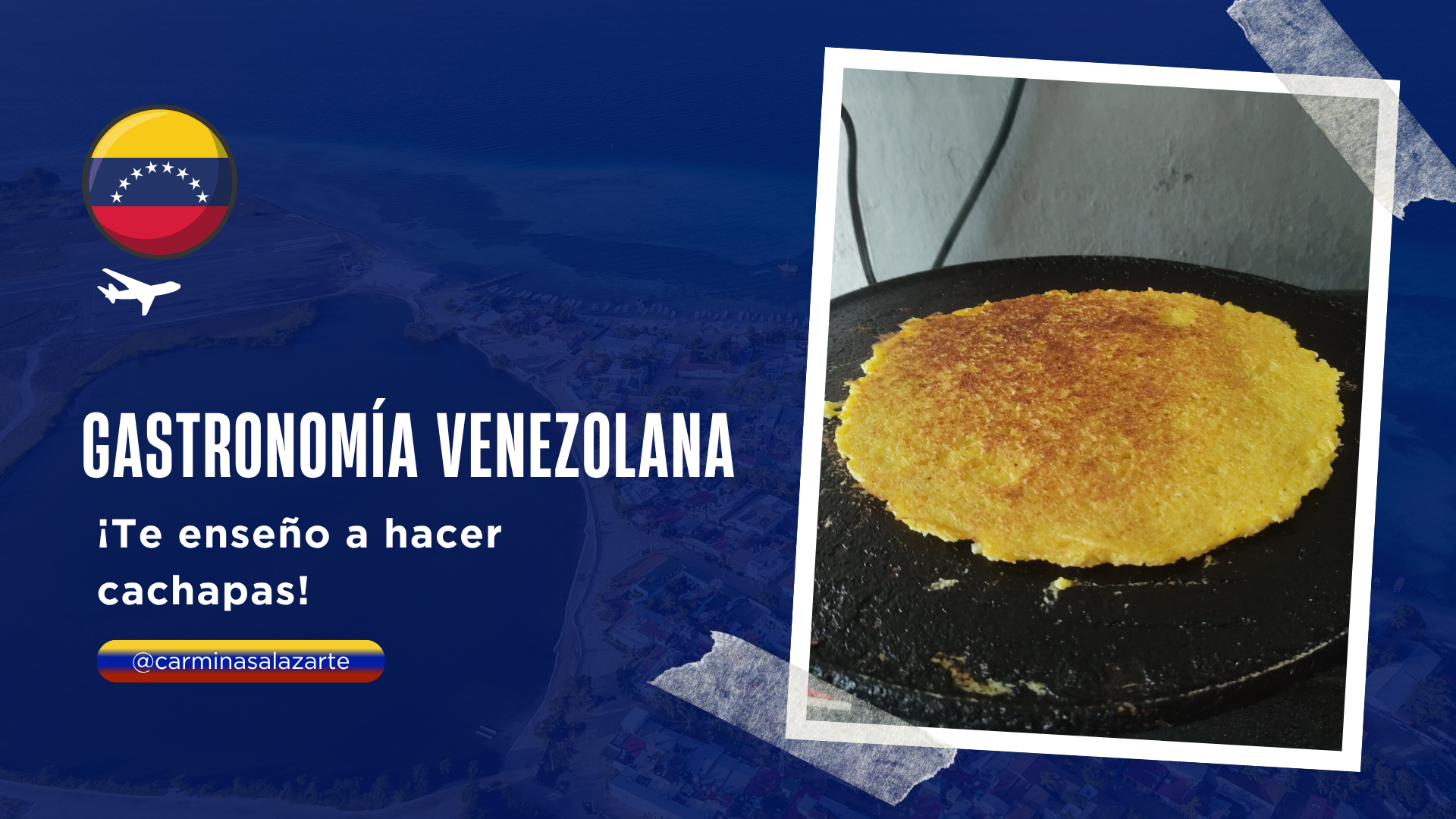
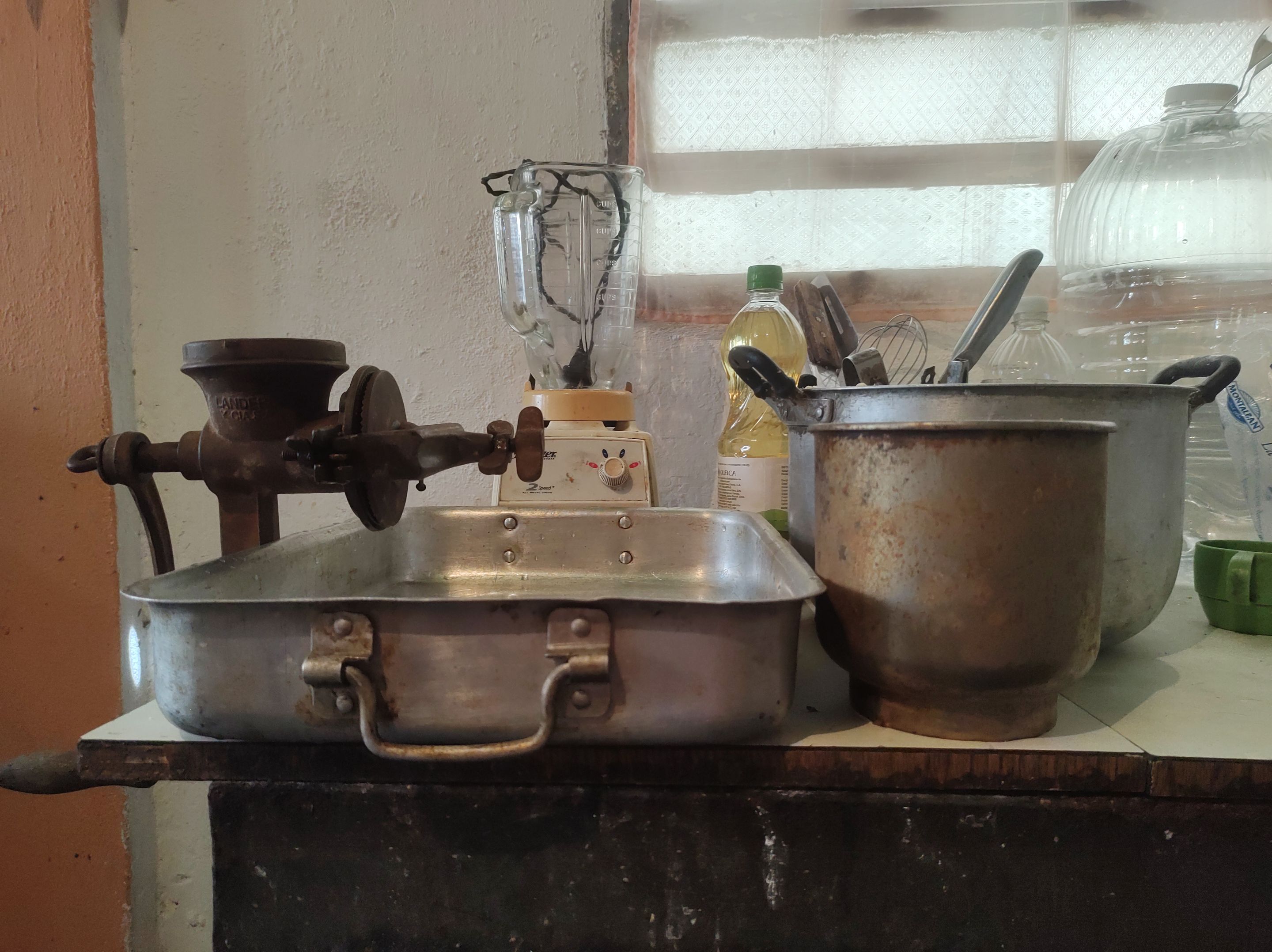
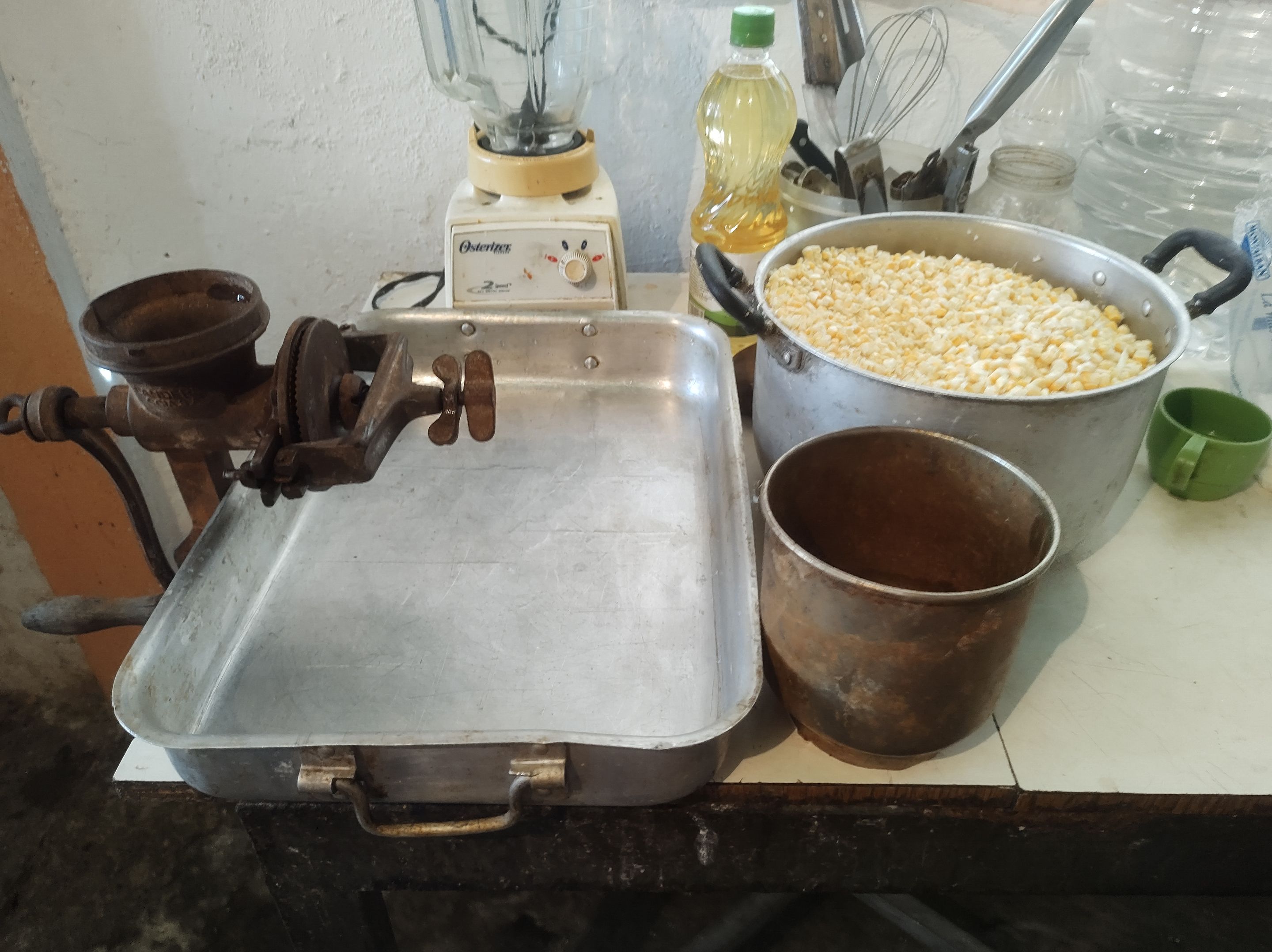
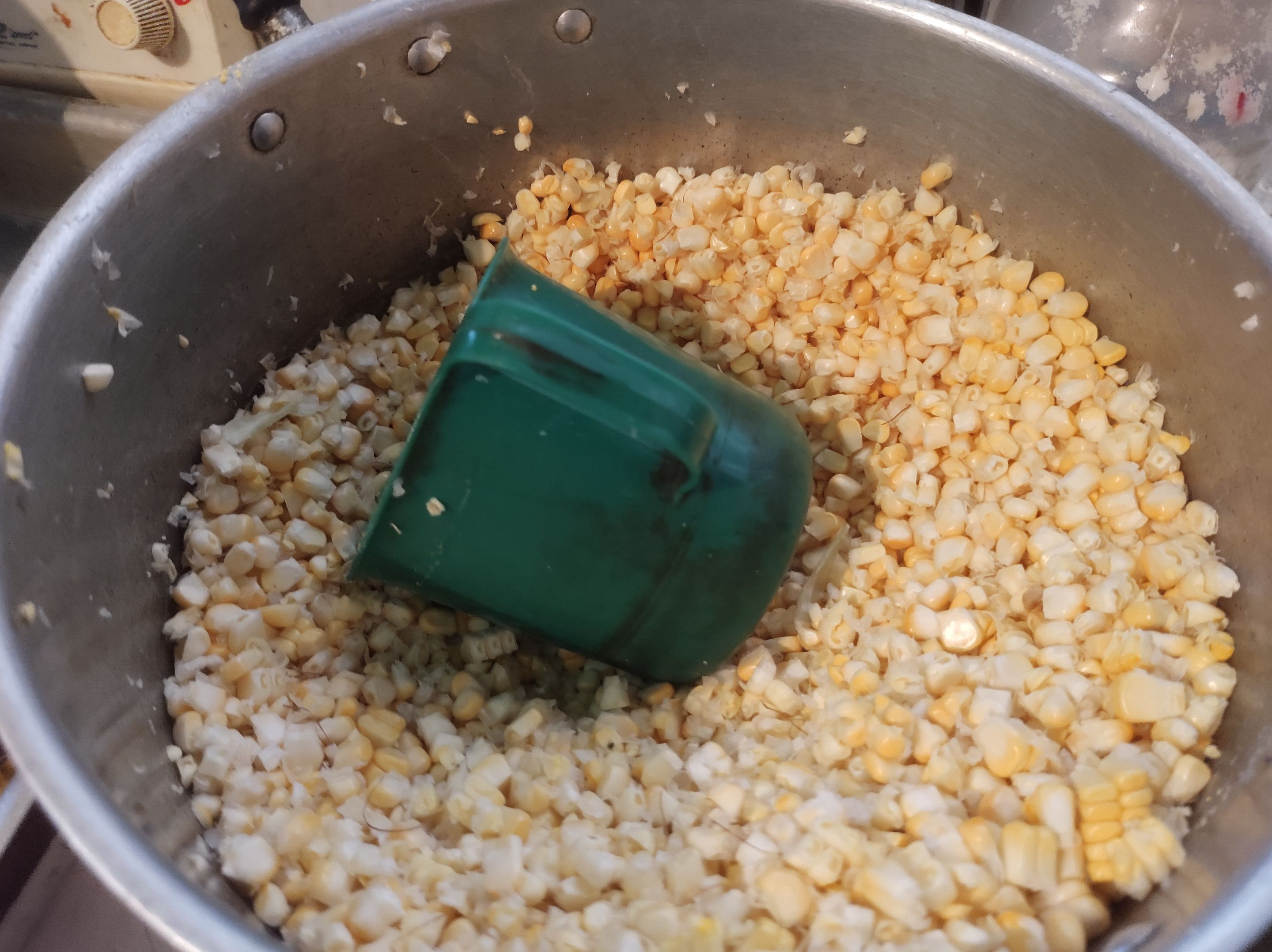
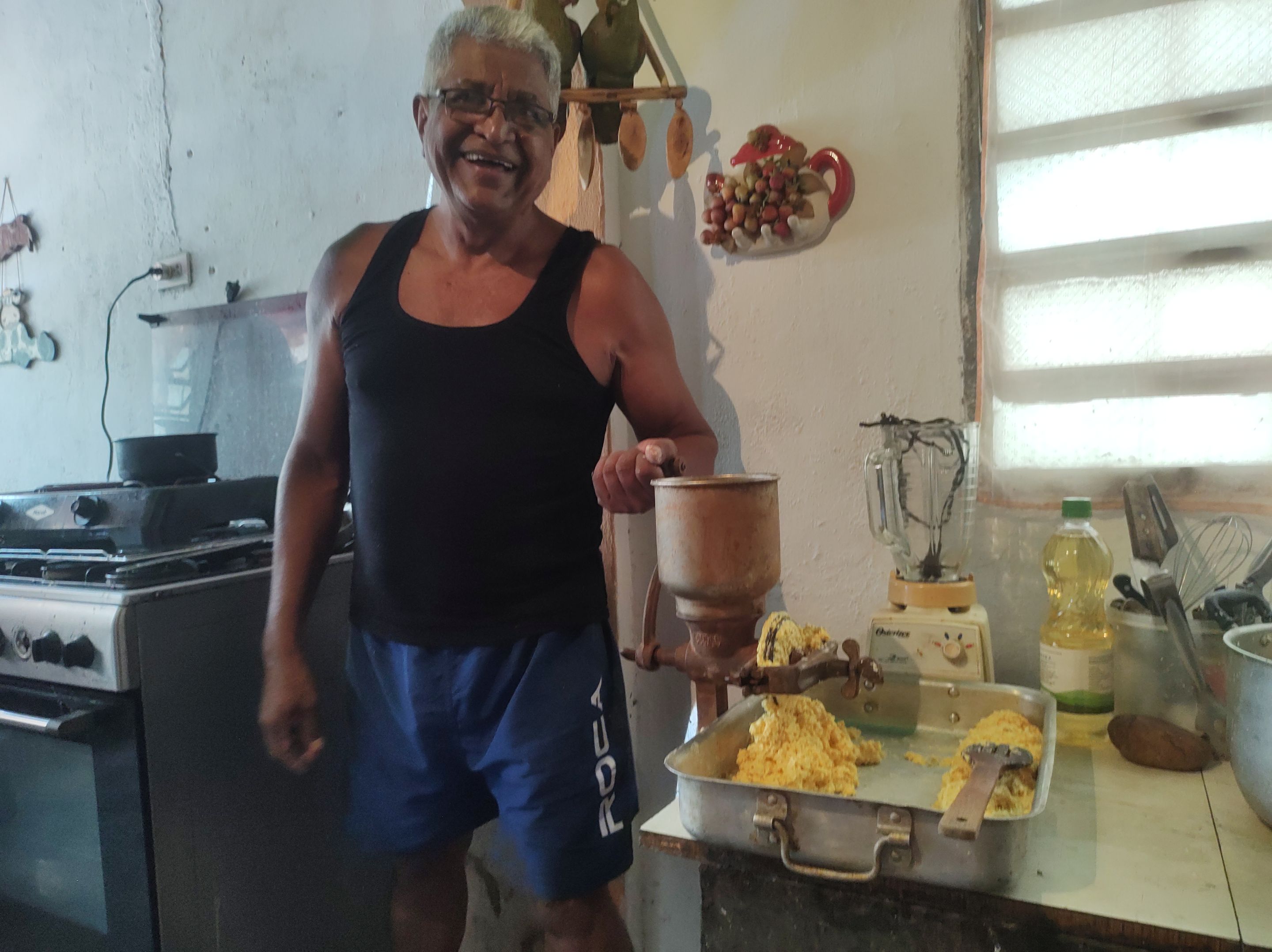
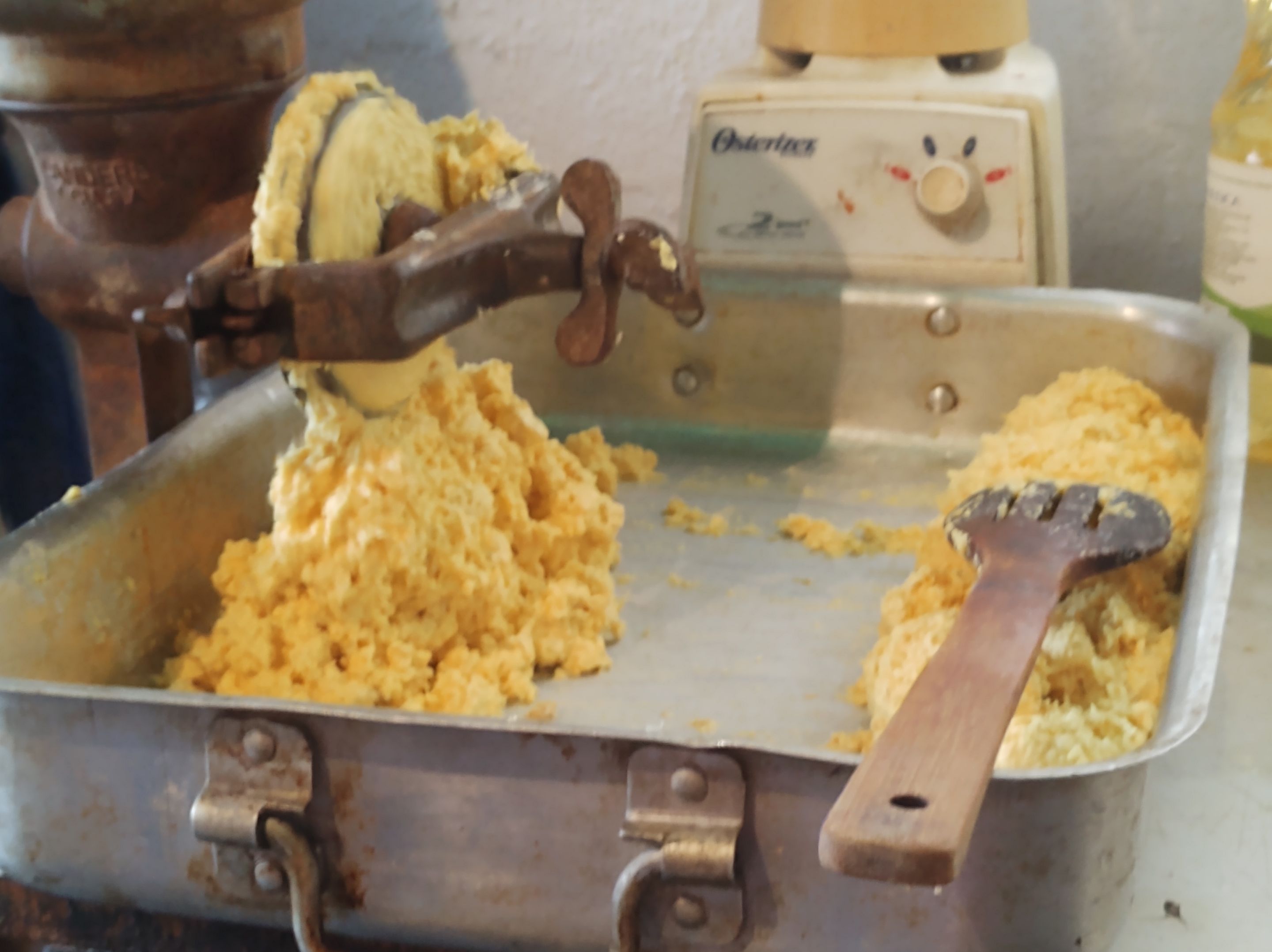
Greetings to everyone in the Hive Food community! Today I'm joining you here to share a culinary adventure with you. This time, I want to show you the process of making the famous and iconic Venezuelan cachapas. This is from my stepfather, who is in charge of carrying out all the steps to make cachapas at my mother's house. And the best part is that they tend to be very popular because our relatives usually like them and ask my stepfather to make some for them. His secret? Well, here it is.
The first thing he does is choose a good corn (or hominy), which must be quite tender so that the cachapa is sweet and smooth. If the corn is too ripe, it will be tough and impossible to make it well, so you should never try it at that stage. Then he moves on to shelling the cobs and, in a wooden pan, he finishes cleaning them (of all the impurities that usually remain). With all the kernels ready, the mill is then assembled: a mechanical device (and nowadays there are also electric ones) into which the corn is passed to "crush" it and obtain the characteristic mass of cachapa. This process is my favorite because it's pleasant to see how all that corn turns into a more or less homogeneous mass. And here I return to the same point: if the corn is tender (not very ripe), more comes out and it has a better flavor.
¡Saludos a todos en la comunidad de Hive Food! El día de hoy me uno por aquí para compartir con ustedes una aventura gastronómica y es que en esta ocasión, les quiero mostrar cómo es el proceso para realizar las famosas e icónicas cachapas venezolanas. Esto por parte de mi padrastro, quién es el encargo de realizar todos los pasos para obtener las cachapas en casa de mi madre. Y lo mejor, es que suele ser muy populares pues nuestros familiares suelen gustar de ellas y pedir a mi padrastro que haga algunas para ellos ¿su secreto? bueno aquí se los cuento.Los ingredientes son: maíz crudo, leche (en polvo o liquida) y azúcar. Lo primero que se hace es elegir un buen jojoto (o maíz) el cual debe de estar bastante tierno para que la cachapa quede bien dulce y suave. Si el maíz está muy maduro, entonces será duro e imposible de que quede bien, por lo que nunca se debe buscar en esa etapa. Luego pasa a desgranar las mazorcas y en una paila de madera, termina de limpiarlas (de todas las impurezas que suelen quedar). Con todas las pepitas de maíz listas, se arma entonces lo que es el molino; un aparato mecánico (y hoy en día también hay eléctricos) dónde se pasa el maíz para "aplastarlo" y obtener entonces la masa característica de la cachapa. Este proceso es mi favorito pues es agradable ver cómo todo ese maíz pasa a ser una masa más o menos homogénea. Y aquí vuelvo a lo mismo; si el maíz está tierno (poco maduro), sale más y de mejor sabor.
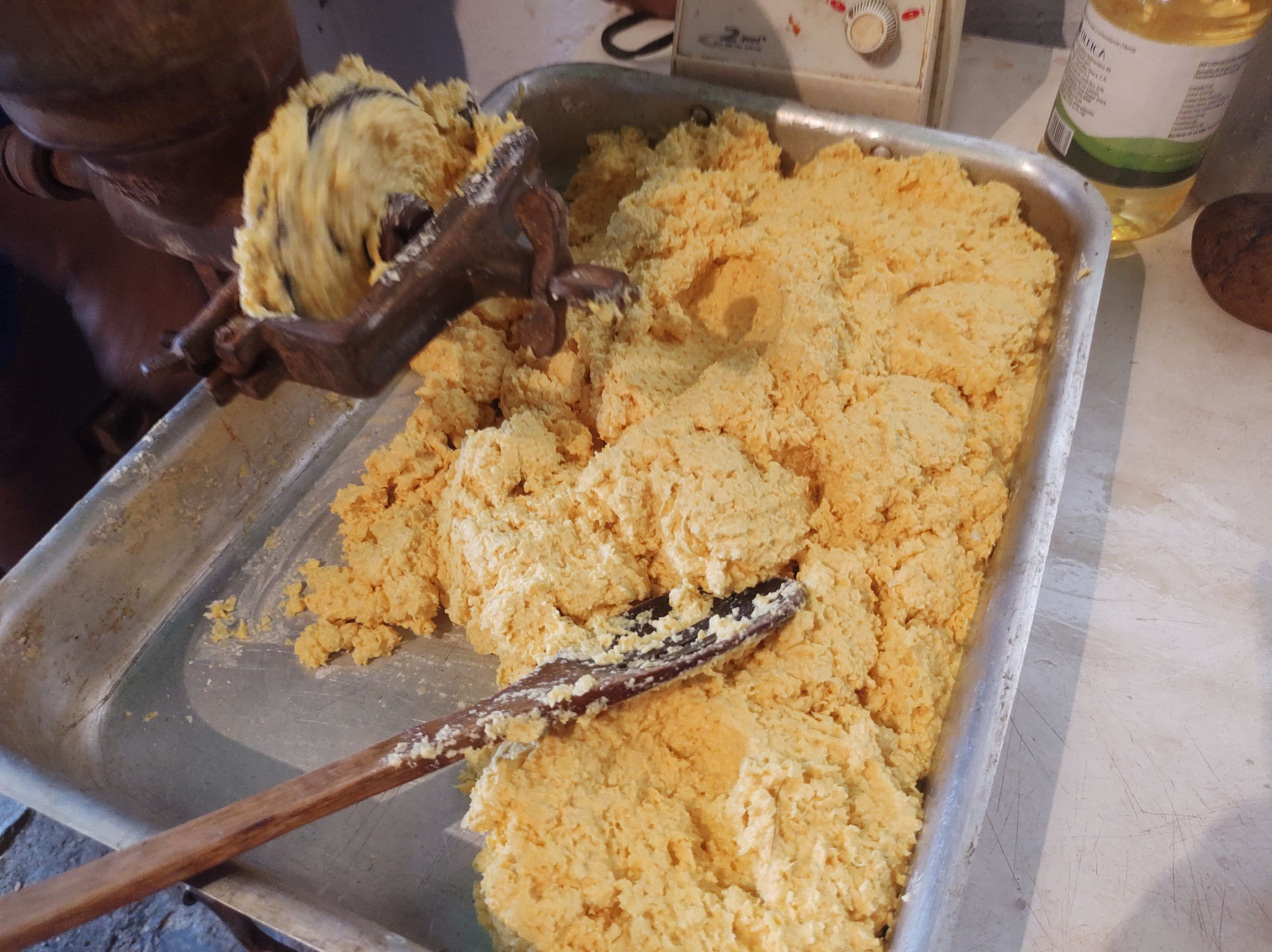
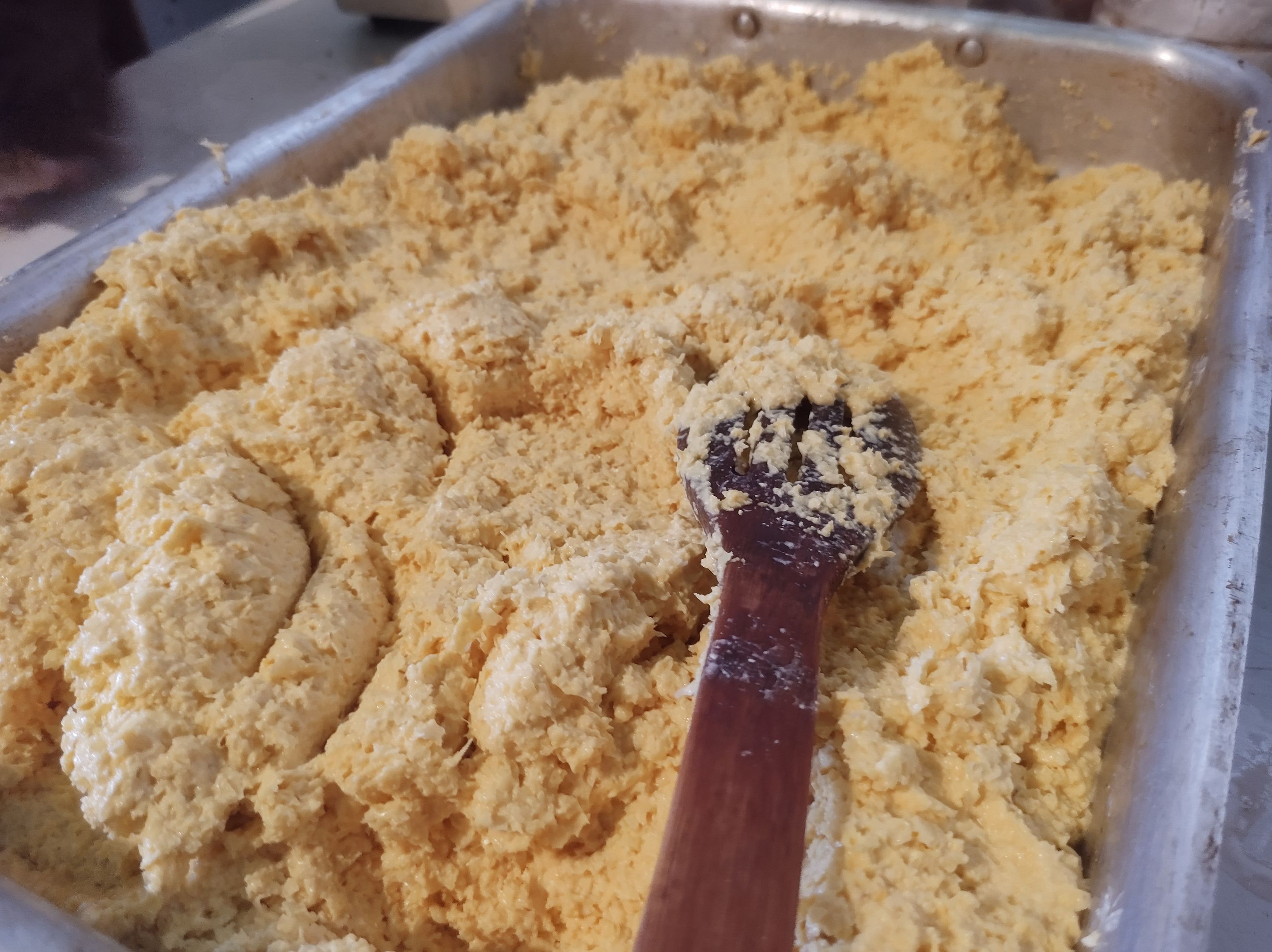
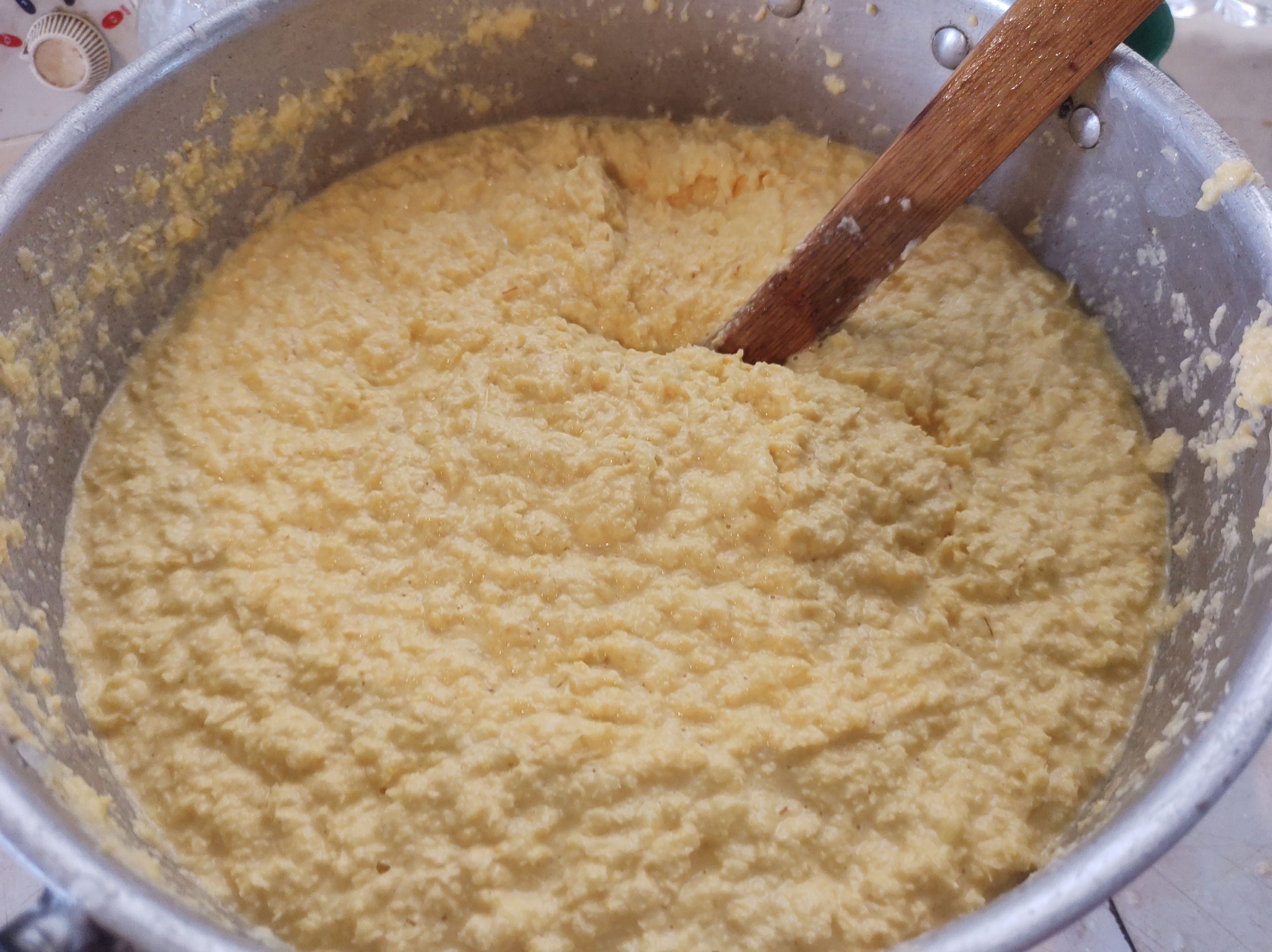
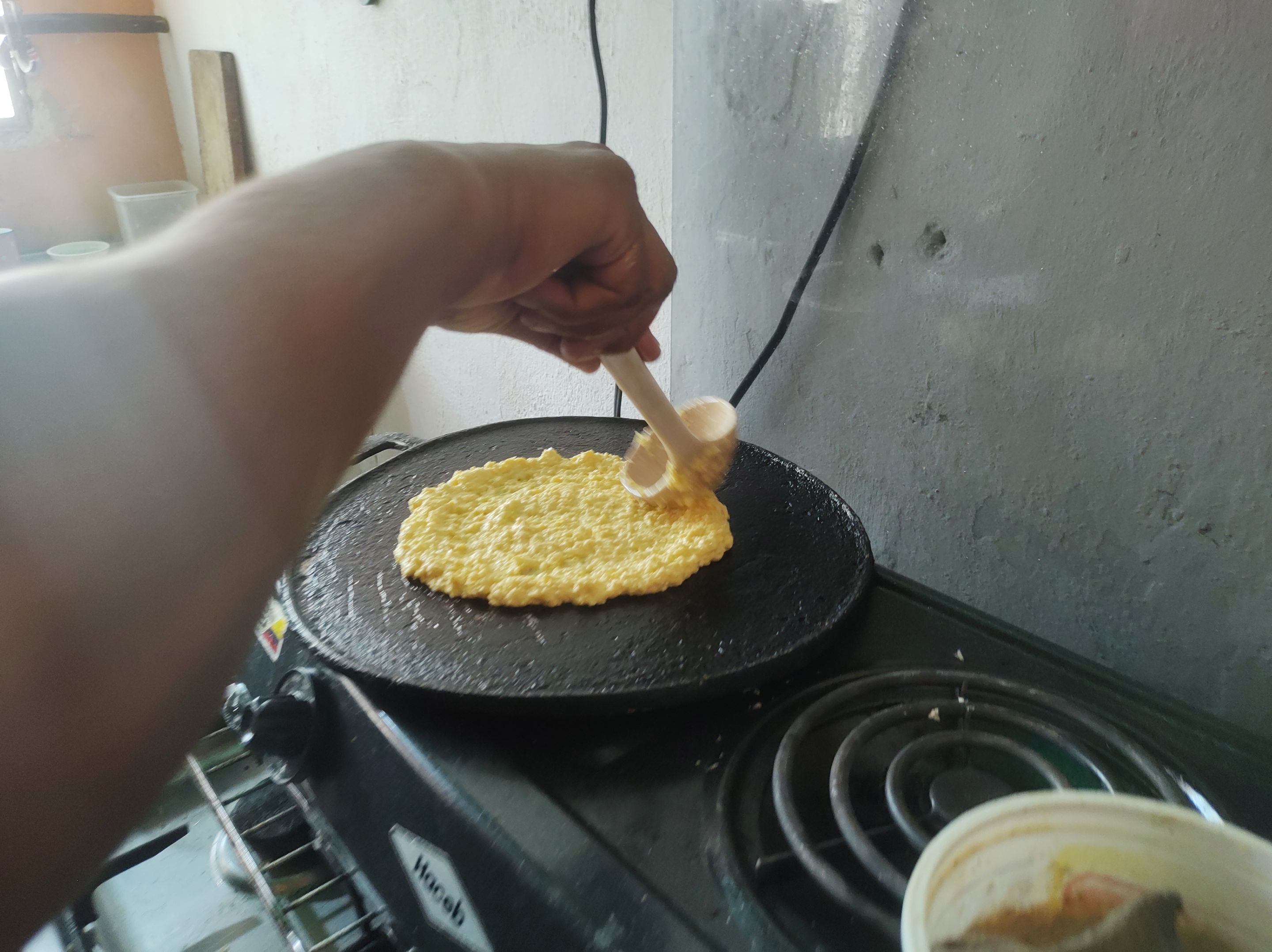
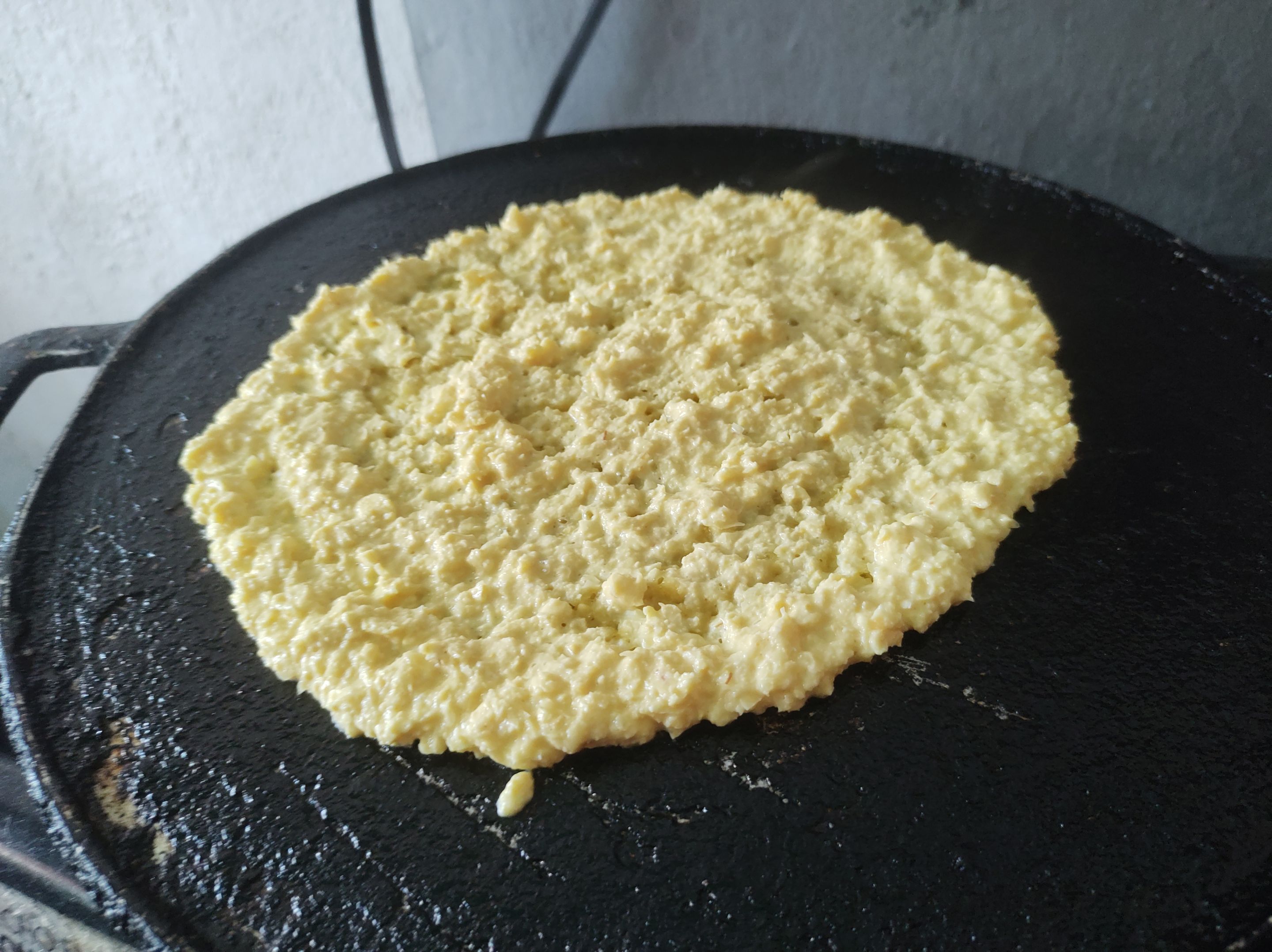
After grinding all the corn, it must be mixed with milk, water, and sugar. This is a matter of custom and taste, as some prefer a little more sugar or milk, but the truth is that it's always important to strike a balance so that the cachapa doesn't become a strange mass with a predominant flavor of milk or sugar. It's also important to note that some people add flour or cornstarch to give it more "body" or yield the mass, but I don't recommend this because the joy of eating cachapa is being able to taste the full flavor of the pure corn, barely mixed with milk and sugar. So, the fewer things you add, the better. Now, once everything is mixed, you proceed to make the first cachapa, which serves as a test to see if any ingredients need adjusting.
The cachapa should be placed in a very hot budare, brushed with lard (or any oil you prefer), and then add a generous amount of dough with a ladle. Work from the middle to the edges to give it that characteristic round shape, and if desired, use a spoon moistened with water to help give the cachapa symmetry. Let it cook thoroughly, as they take time to cook, about 15 minutes or so. When the cachapa is golden brown and slightly black on both sides, it's ready to eat. Add butter and cheese and enjoy. We made two dozen and got about 30. By the way, the secret to a good cachapa, according to my stepfather, is: tender corn (slightly ripe), no flour or cornstarch, and let it cook thoroughly. That's all. Without further ado, thank you so much for stopping by.
Luego de moler todo el maíz, se debe pasar a mezclar con la leche, el agua y el azúcar. Aquí es cuestión de costumbre y gusto de cada quién, pues algunos prefieren un poco más de azúcar o leche, pero lo cierto es que siempre es importante es llevar un equilibrio para que la cachapa no se vuelva una masa extraña con sabor predominante de leche o azúcar. También es importante señalar que algunas personas le añaden harina o Maicena para darle más "cuerpo" o rendir la masa, pero no aconsejo esto pues lo rico de comerse una cachapas es poder sentir todo el sabor del maíz puro que está apenas mezclado con leche y azúcar. Así que mientras menos cosas añadidas, mejor será. Ahora, cuando se ha mezclado todo, se procede a hacer la primera cachapa que sirve de prueba para saber si necesita rectificar algún ingrediente.La cachapa se debe colocar en un budare bien caliente, se da una pasada de manteca de cerdo (o de aceite del que usted desee) y con un cucharón se añade una buena cantidad de masa. Se va desde el medio hasta los bordes para darle esa característica forma redonda y si se desea, con una cuchara humedecida en agua se ayuda a dar simetría a la cachapa. Se debe dejar cocinar muy bien pues ellas llevan tiempo para cocinarse, unos 15 minutos más o menos. Cuando se tiene dorada y un poco negrita por ambos lados de la cachapa, está lista para comer. Se añade mantequilla y queso y a disfrutar. Nosotros hicimos dos docenas y sacamos unas 30. Por cierto el secreto de una buena cachapa según mi padrastro es; un maíz tierno (poco maduro), nada de harinas o maizena, dejar cocinar bien. Eso es todo. Sin más que decir, muchísimas gracias por pasar por aquí.
